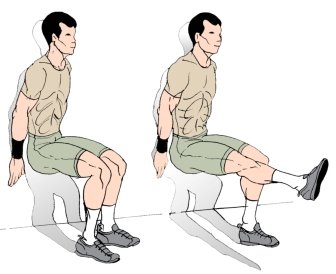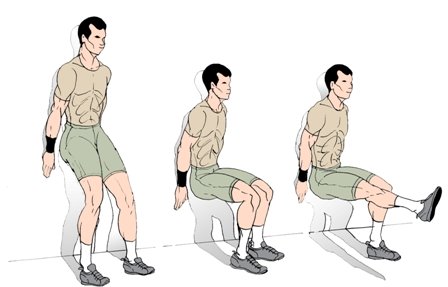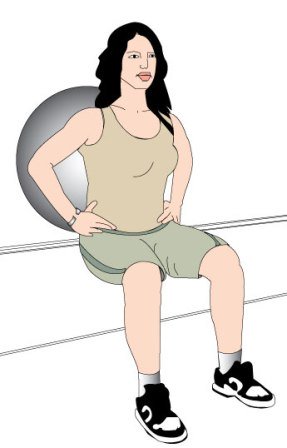How to do Isometric squats with Proper Technique

How to do Isometric Squats Exercise Properly with hold times, technique and more functional training tips for strong and explosive legs. Isometric Squats help build hip and knee strength.
Isometric squats
Before going into isometric squats, for the benefit of those who are not yet conversant with the concept, it is better to expand into a definition of what a squat is, what isometric exercises are then finally to what an isometric squat is and how to do this exercise.
What are squats and what are its benefits to the body?
Squats are leg exercises that are performed by placing the hands at the backs of the heads, and with the legs shoulder widths apart and the spine straight, repeatedly bending and standing upright again. The exercise can be intensified by carrying weights or using a squat machine that can be varied.
What are isometric exercises?
Isometric exercises are those that the joints and muscles are not allowed to move a great deal, or contract to any extent, instead they are allowed to be static and a force is generated at the joints and muscles without movements. They are mostly apparent when a person pushes against a wall. The wall doesn’t move, the person doesn’t move, but a significant force is generated at the joints and muscles and this increases strength at the joints.
So what then are isometric squats?
Isometric squats are therefore squats that are performed but with restricted movements so as to generate a static force in the joints and muscles rather than a dynamic force. One of the most common forms is to perform the squat with the back against the wall since this will restrict movement a great deal.
How to do Isometric Squats?
Do 5 sets of 10 repetitions, holding each repetition for at least 10 seconds.

Step 1: Stand with your feet approximately 20 inches from a wall with the small of your back against the wall, your hands stretched out in front of you for balance and your feet shoulder width apart.
You can also keep your hands along the wall as shown.
Step 2: Now lower yourself to a position at which your knees are at a 90 degree angle or your thighs are parallel to the floor.
Step 3: Hold for at least 10 seconds in this position, stand and then repeat.
Step 4: Take it to the next level by doing isometric squats with one leg as shown.
Special Exercise - Isometric Squats on a Stability Ball

How deep can you go?
Ideally you should go as deep as possible for functional strength. You can hold this posture for as long as 3 minutes.
Isometric Squats Workout Tip
I suggest you do the isometric squat workout of 5X10 {5 sets of 10 reps}, only two to three times a week as it can be very taxing on the nervous system.
I prefer reading in this position and have noticed that the time just flies.
If your goal is to build lean and strong glutes, then you try isometrics with sissy squats wherein you hold a isometric squeeze at the top of the movement.
Also check out other Isometric Exercises
Back to Top of Isometric Squats Exercise Article.




